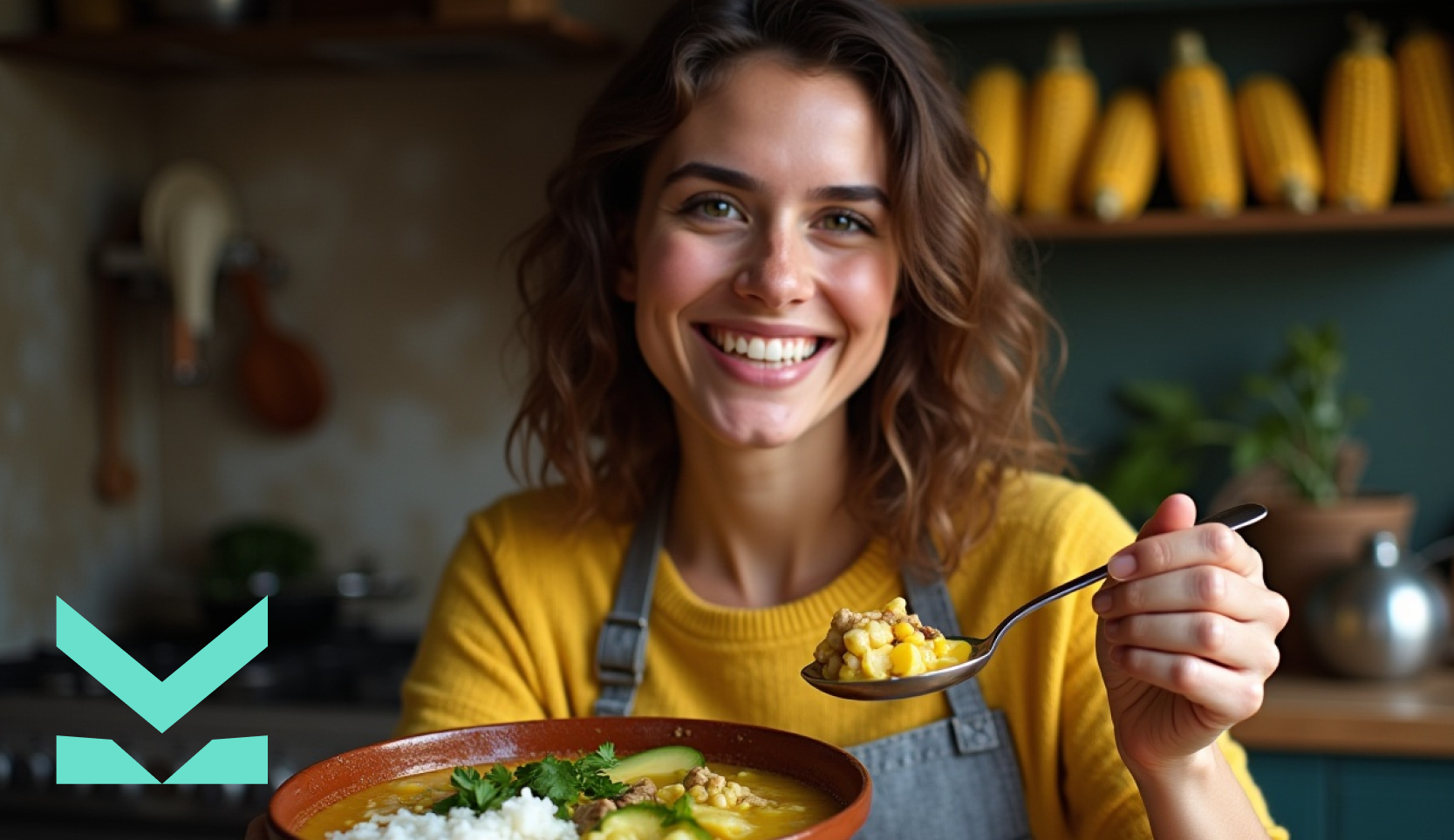The Venezuelan sancocho it's not just a plate, it's a tradition and family togetherness.
When we think of the Venezuelan sancochoSunday get-togethers, spontaneous celebrations and the warmth of Creole cuisine that connects us to our own culture come to mind. roots.
For those of us in the foreignerespecially if we live in Europeprepare a Venezuelan sancocho is a challenge full of nostalgia, because we do not always find the same ingredients we grew up with in the past. Venezuela.
However, with creativity and a few substitutes available at European marketsit is possible to recreate the Venezuelan sancocho and enjoy that flavour that takes us back home.
The meaning of Venezuelan sancocho for us
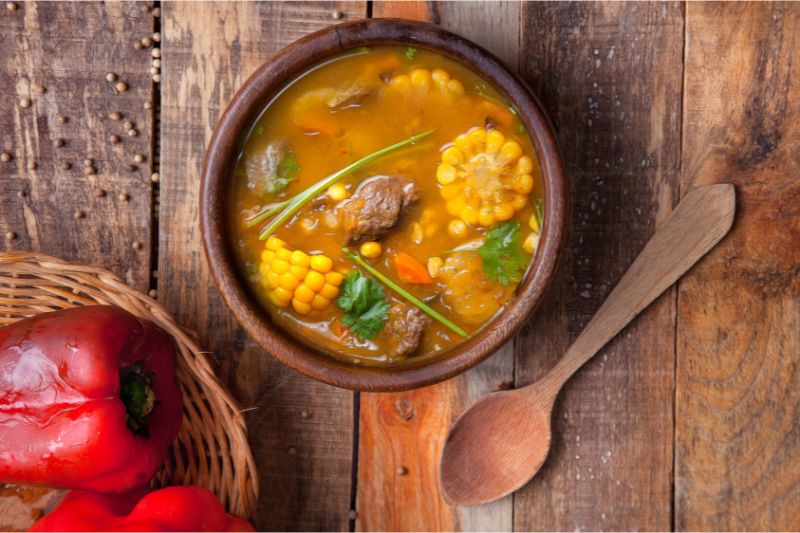
The Venezuelan sancocho is much more than a thick soup with meat and tubers. It is a traditional Venezuelan dish and collectivedesigned to be shared between family and friends.
At Venezuelaeach region gives it its particular touch, the Venezuelan sancocho in the plains, fish on the coasts, chicken in the Andes, or the mixed versions which combine chicken, ribs and vegetables.
Preparing it involves patience, time and a low heat that gradually brings out the best of each ingredient. And, if you combine it for dessert with a good sweet arepaYou will feel as close to home as the people who live there.
It is a dish that accompanies celebrations, but also difficult moments, because its purpose is always to comfort.
For the Venezuelans in the diaspora, this dish becomes a kind of ritual of cultural resistance, cooking it in another continent is a way of saying "We are still us".
Traditional ingredients
The secret of Venezuelan sancocho is in the variety of Creole ingredients that combine roots, vegetables and proteins. Among the most common are:
- Proteins: chicken, chicken, beef rib or fish (depending on the region).
- Tubers: yucca, yam, ocumo, Creole celery and potato.
- Vegetables and dressings: onion, spring onion, sweet chilli, paprika, garlic, green garlic and coriander.
- Other touches: jojoto (baby corn chunks) and green plantain, which add texture and sweetness.
These ingredients not only bring flavour, but also cultural identity. The challenge arises when we try to replicate the Venezuelan sancocho at Europewhere many of these foods are not so readily available.
Who we migrate we know what it means to enter a European supermarket looking for cassava or yamand end up empty-handed.
Although in large cities there are Latin tents that offer imported products are not always available, and sometimes the prices are high.
Therefore, when preparing a Venezuelan sancocho at Europecreativity becomes an ally. The key is to identify substitutes that provide a flavour and texture as similar as possible, without losing the Creole essence.
Alternative ingredients in Europe
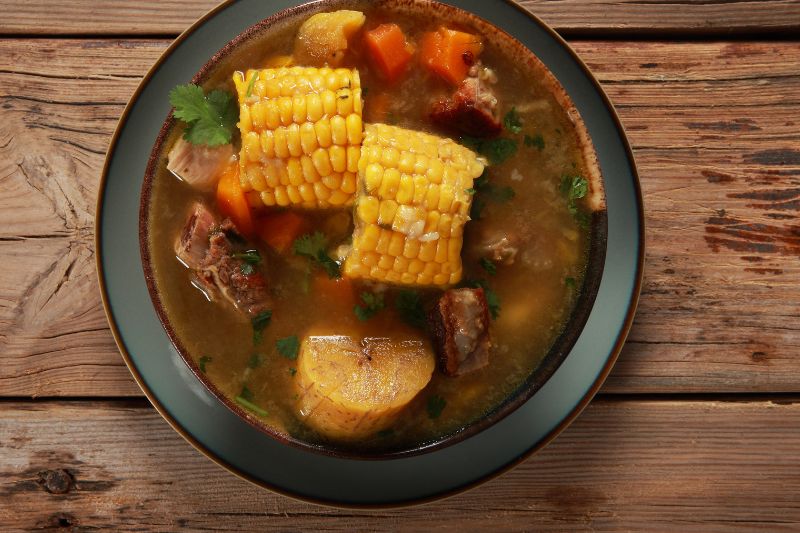
Here we share some substitutes that work very well when we want to prepare a Venezuelan sancocho from this side of the Atlantic:
- Cassava: in many European countries is difficult to obtain fresh, but it is available frozen at Latin tents or African. As an alternative, floury potato or cassava flour dumpling in Caribbean markets.
- Ocumo and yam: can be replaced with parsnipturnip or even European white sweet potato.
- Celery Creole: replaceable by celeriac (celeriac), very common in Europe and with a similar texture.
- Jojoto: on baby corn on the cob is often found frozen in international supermarkets.
- Green banana: some African or Asian shops sells it but in extreme cases, it can be omitted or replaced by a male plantain.
- Creole dressings: on sweet chilli is the most difficult to replace, but it is possible to use a small red or yellow pepper combined with a touch of sweet paprika. Leek can easily be substituted for the leek. The coriander is found fresh in most of the European markets.
With these adjustments, the Venezuelan sancocho manages to retain its essence and, although it is not identical to the original, it is still an embrace in the form of a soup.
Practical recipe for Venezuelan sancocho adapted in Europe
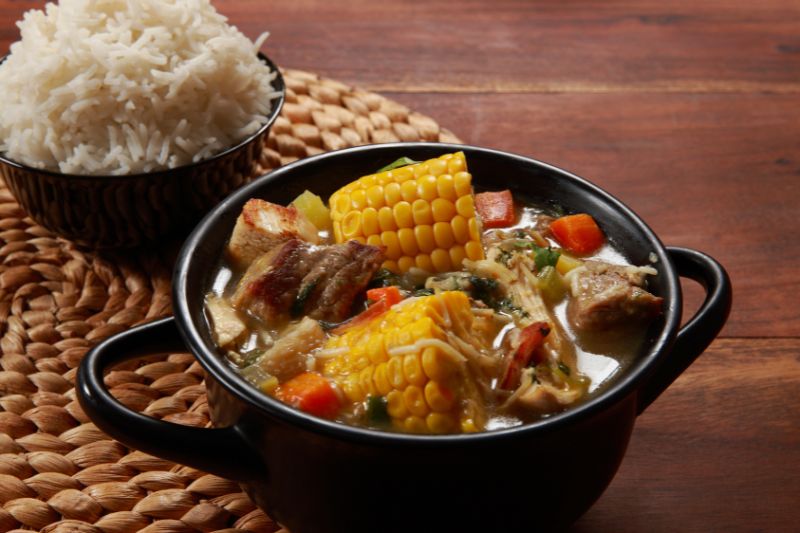
Ingredients:
- 1 free-range chicken or 1 kg beef rib (can also be mixed).
- 3 ears of baby corn (fresh or frozen), cut into pieces.
- 2 diced parsnips or turnips (substitute for yam).
- 500 g floury potato.
- 1 white or orange sweet potato (optional, for sweetness).
- 1 sliced green plantain.
- 2 sprigs of leek (substitute for leek garlic).
- 1 sweet red pepper (substitute for sweet chilli).
- 1 large onion.
- 3 cloves of garlic.
- 1 bunch of fresh coriander.
- Salt, cumin and pepper to taste.
- Enough water to cover all the ingredients.
Preparation:
Preparing meats
If you use free-range chicken, we recommend that you use free-range chicken, because it has more flavour and is more similar to chicken. Creole hen we use in Venezuela.
Cut the chicken into medium-sized pieces and trim off any excess fat. If you prefer beef ribAsk the butcher to cut the meat into pieces with bone, as the bone is what will give depth to the broth. Wash the meat well and set aside.
Initial stir-fry
In a large saucepan (ideally a heavy-bottomed one), add a dash of oil y sauté the onion, the chopped garlic cloves, the sliced leek and the red pepper.
This step is fundamental because it is here that the first level of flavour of the Venezuelan sancocho. Allow the vegetables to sweat over medium heat, stirring constantly so that they do not burn.
Meat sealing
Add the chicken prisoners or the potted rib chunks. Sauté them together with the seasoning until lightly browned. This step helps the meat to release juices and generate a broth more flavoursome. Add a little salt and pepper to taste.
Add water and create the base stock
Once the meat has been sealed, cover with plenty of water (at least 3 litres). Turn up the heat and bring to the boil. When it starts to foam, remove it with a spoon to obtain a cleaner broth.
Let it cook for a few minutes 30-40 minutes over medium heatto ensure that the meat tenderises and releases its full flavour.
Incorporate the hardest tubers
Add the parsnip or turnip pieces (substitutes for octopus or yam), together with the sweet potato and the cut ears of maize.
These ingredients need more time to soften, so it is important to put them in earlier. Cook for Additional 20 minutes.
Add the potatoes and the green banana.
Peel and cut the potatoes into large chunks.Cut the banana into bite-sized pieces. Do the same with the thickly sliced green plantain. Add both to the broth and stir gently.
The banana is key because it helps naturally thicken the broth and provides a characteristic taste of the Venezuelan sancocho.
Rectify seasoning
Taste the stock and adjust with salt, a touch of cumin and pepper to taste. If you notice that it lacks intensity, you can add a chicken or beef bouillon cubeThe ideal is to keep it as natural as possible.
Deja boil over medium-low heat for a further 30 minutes.or until the vegetables are soft and the soup is full-bodied.
The final touch of freshness
Just before turning off the heat, add a bunch chopped fresh coriander. This detail is the Creole stamp that gives you aroma and freshness at Venezuelan sancocho. Mix gently so that it integrates with the hot broth.
Rest and serve
Put out the fire and let the stew stand covered for 10 minutes. This allows the flavours to concentrate even more. Serve in deep bowls, making sure that each person gets a good portion of broth, meat, maize and tubers.
Recommended companions
The Venezuelan sancocho is never enjoyed on its own. Ideally, it should be accompanied by arepas freshly roasted, fresh avocado slices or a good spicy chilli pepper.
If you don't have arepas, a European peasant bread can fulfil the function of soak the broth and complete the experience.
Tips for keeping up the spirit
Even if we change ingredients, what must never be lacking is the spirit of the Venezuelan sancocho:
- Cooking with the family: invite friends or fellow countrymen over to chop the vegetables and chat while the pot is boiling.
- Accompanying persons: avocado, arepas or even European bread can be used to dip in the broth.
- Time and patience: there are no shortcuts, taste is built little by little.
- Share: a Venezuelan sancocho is never for just one person; it is for everyone at the table.
The cultural bridge
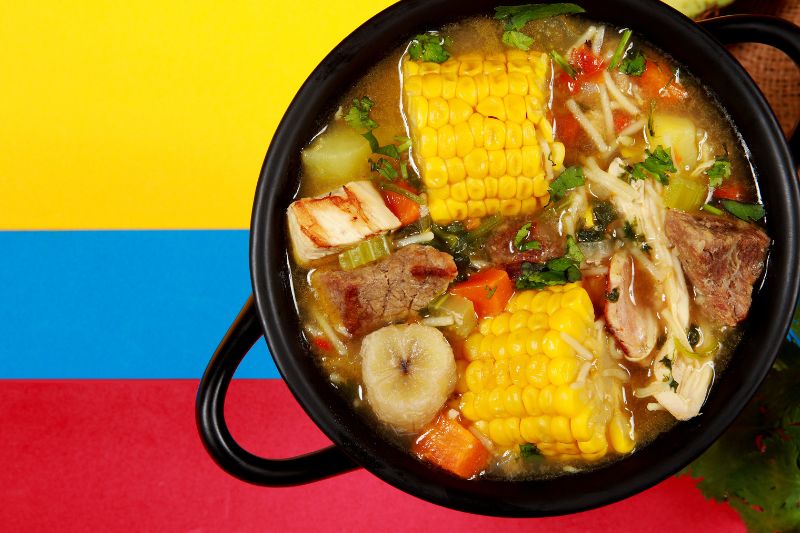
Cooking a Venezuelan sancocho at Europe is not just a culinary eventis a gesture of memory and belonging. It is to demonstrate that, despite the distancewe continue connected to our land through flavours and aromas.
Every time we boil that potwe recreate the same ritual that generations before us practised in Venezuelato gather around the fire, share a hot meal and feel that, even though we are far away, we are carrying Venezuela on our palate.
The Venezuelan sancocho is one of the Christmas traditions that transcends borders. Although in Europe let us not always have at hand yuca, ocumo or aji dulceWe can find alternatives that allow us to keep alive the essence of this dish that is so much a part of us.
Adapt the Venezuelan sancocho with European ingredients does not mean losing authenticity, on the contrary, it is a sign of resilience and creativity. Each pot prepared outside the country is a reminder of our roots, a bridge of nostalgia that becomes hope and unity.
Because in the end, beyond the substitutions, what really matters about the Venezuelan sancocho is the spirit in which we cook it and share it. And that, no matter what, is never lost.
With Curiara, you will feel at home. Because every bite is a story, a living memory of home. And on this journey of returning with your heart, we are always with you.
